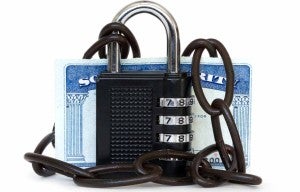 Just how many Americans have been victims of identity theft? No one really knows, but rest assured it’s more than a handful.
Just how many Americans have been victims of identity theft? No one really knows, but rest assured it’s more than a handful.
The FTC estimates that more than 9 million Americans become victims of identity theft each year. And according to a Javelin study conducted in 2009, that number jumps to 11.1 million consumers, costing a total of $54 billion in damages.
Honestly, I think all of these numbers are low. And regardless of whether the number of instances of identity theft is 10 or 20 or even 100 million, each of us should take steps to protect ourselves.
By understanding what identity thieves are looking for, and being aware of how they’re gaining access to personal financial information, you can be proactive safeguarding your own. To get you started in the right direction, we’ve pulled together a few of our top tips for protecting your personal identifying information. By using a little common sense and following these 12 tips, you’ll stay one step ahead of identity thieves:
1. Protect Your Social Security Number
A name and a Social Security number is all an identity thief needs to do some serious damage. Unless you’re applying for a job, filing your taxes, or applying for a loan — be very stingy when it comes to sharing your SSN. Before you give out this information, make sure you know who you’re dealing with and why they need it. You should also avoid carrying your Social Security card around with you – don’t carry it in your wallet! Keep it safe in a locked drawer or filing cabinet at home. And if your Social Security number is used as your ID number on your drivers license or insurance card, request that they assign an alternate number. And lastly, keep your SSN and driver’s license numbers off your checks, and do not allow merchants to write either of them on your checks either.
2. Guard Your Financial Information
Never release any of your personal identifying information, credit card or bank account numbers over the telephone, over the Internet, or by mail –unless you have a trusted business relationship with the company and you have initiated the contact. Find a safe place for your sensitive financial information. Put bank statements, credit card statements, student credit cards, online financial passwords, your Social Security card, health insurance card, and other financial and medical records in a locked draw or locked filing cabinet. Shred all financial and medical information that you don’t want to keep.
[Featured Product: Get peace of mind with one of Credit.com’s top rated Identity Theft Protection Services]
3. Protect Your PINs & Beware of Shoulder Surfers
Don’t share the personal identification number for your ATM card, debit card or credit card with anyone. Be aware of your surroundings and use your hand to shield your PIN if there are people standing too close to you. Technology has come a long way and unfortunately, so have identity thieves. With the invention of camera phones it only takes a shoulder surfer a matter of seconds to steal your information. Likewise, make sure you use a trusted ATM machine. Crooks have mastered the use of “ATM skimmers” and it can be hard to tell the difference between a legitimate ATM machine and one that has a skimming device added. Increased awareness and an eye for detail can protect you from granting a skimmer full access to your banking account. This tip goes for all PIN numbers, including the PIN numbers and passwords you use for all your online financial accounts.
4. Beware of Unsolicited Emails (aka Phishing Scams)
Some unsolicited emails include links to phony, look-alike financial websites, where a thief hopes you´ll share your private account information and password information. Protect yourself by steering clear of links in unsolicited emails, even from emails claiming to be from companies that you know or do business with. Be cautious of any unexpected request for private information by email. Think about it, why would your bank contact you asking for information they should already have? If you believe the contact may be legitimate, contact the financial institution yourself. You can find phone numbers and websites on the monthly statements you receive from your financial institution, or you can look up the company in a phone book or on the Internet. The key is that you should be the one to initiate the contact, using contact information that you have verified yourself.
You Might Also Like
October 19, 2023
Identity Theft and Scams
May 17, 2022
Identity Theft and Scams
May 20, 2021
Identity Theft and Scams






